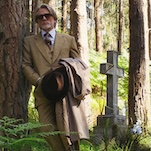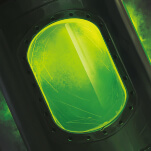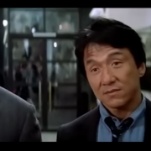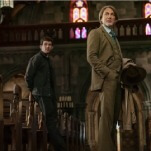James Glanz & Eric Lipton: City In The Sky: The Rise And Fall Of The World Trade Center

In 1968, Lawrence Wein, the owner of the Empire State Building and a virulent opponent of the planned World Trade Center, ran an ad in The New York Times urging the public to demand a more "reasonable" design for the twin towers–900 feet, instead of approximately 1,700. His argument, self-serving as it undoubtedly was, centered on the possibility of a commercial airliner crashing into one of the buildings, because their outrageous height would alter flight patterns. By way of illustration, the ad showed the towers stretching infinitely to the heavens, with the ghostly image of a plane heading straight toward the upper floors. Of course, no one ever fathomed that a plane would be deliberately directed into the towers–least of all Wein, whose own building weathered the impact of an errant B-25 in the mid-'40s. But the inflammatory ad is only the most obviously prescient sign in the short, violent history of the WTC, which from the beginning sowed the seeds of its own destruction. A refreshing break from the pile of personal and political memoirs on Sept. 11, James Glanz and Eric Lipton's clear, concise, skillfully wrought City In The Sky doesn't once mention Osama bin Laden, George W. Bush, Rudolph Giuliani, or any of the other expected players on the world stage. Instead, the book steps back and examines the actual WTC buildings, detailing the powerful forces and figures that battled over them, their practical and symbolic value to New Yorkers and others, the innovative structure that kept them standing as long as they did during the Sept. 11 attacks, and the oversight that hastened their collapse. Starting with David Rockefeller continuing his family's ambition to revitalize the city, the WTC was born out of equal parts vision and hubris, every bit the gargantuan reflection of the egos involved in creating it. With impressive historical and anecdotal detail, Glanz and Lipton lay out a memorable cast of characters: Austin Tobin, the Port Authority chief who wrestled with and beat the city, New Jersey, and Lower Manhattan shop-owners; Oscar Nadel, who wagered his business (and life) on keeping eviction notices from emptying "Radio Row"; Minoru Yamasaki, an architect forced to design inelegant monoliths that belied his motto ("surprise, serenity, delight"); and John Skilling, whose engineering firm designed the ingenious exoskeleton that defied normal skyscraper construction. Though Glanz and Lipton provide a chilling, you-are-there account of Sept. 11 that's neither sentimental nor sensationalistic, the book's most compelling passages deal with the unique physics of the buildings themselves. Once widely disparaged, the towers have become poignant in their absence, and Glanz and Lipton have done the service of filling in the empty skyline and giving them presence once more.







































